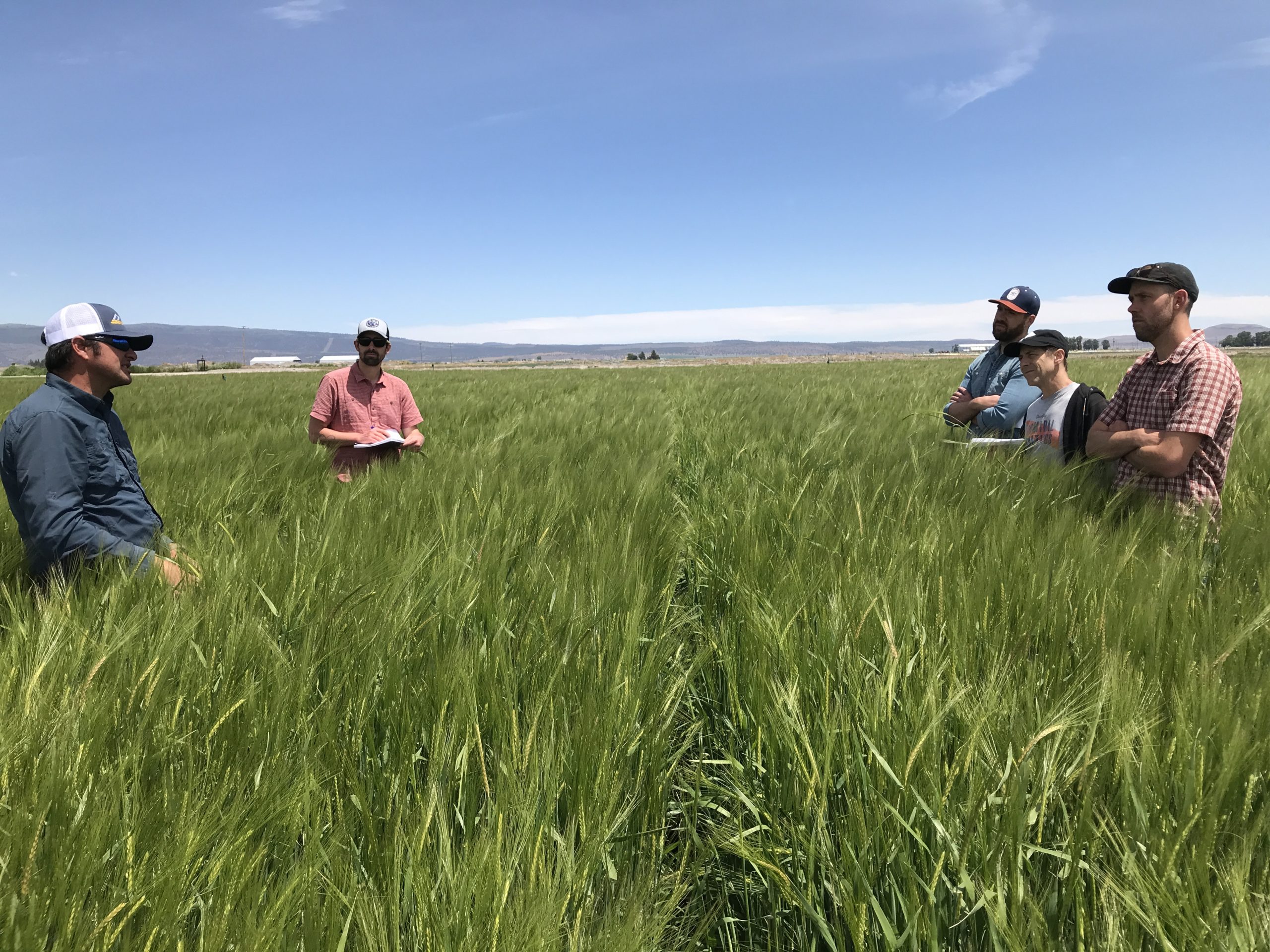By Patrick Hayes, Campbell Morrissy, Scott Fisk, and Laura Helgerson
The 2022 crop at Oregon State University, and with cooperators testing our varieties/potential varieties, was a flat-out success: the sort of season that really makes Beavers want to smack their tails in the pond. There are many tales to tell but we’ll keep this short – starting with an Otter, moving on to some Zeroes and a Promise, and ending with some Thunder and Lightning.
The heirloom winter barley Maris Otter® has long been lauded as “rich and moreish”; “unique, rich and malty”; “the Rolls Royce of malts.” It continues to be planted to significant acreage (5% of UK malting barley) due to its reputation as a malt perfectly suited for all-malt, craft brewing. However, given its status, it is heavily protected and seed production and planting are prohibited outside of the United Kingdom. Thus, an endeavor was begun to breed an updated heirloom, a barley that provides the malt quality and flavor associated with Maris Otter but brings forth contemporary agronomic success in North America. A population of 85 doubled haploids was developed from two crosses made with the Otter and elite malting lines. From the original 85, 47 were selected for more yield testing, and of these, 4 were selected for detailed evaluation in malting, brewing, and sensory trials – the Romp of Otters (1). The top otter – DH142010 – shot to the top of the raft and is now on its way to a licensed variety release, under the provisional name “Lontra”. There’s a lot to this name – think New World Otter.
Working with Admiral Maltings, Lontra has been evaluated in traditional floor maltings to audit its comparisons to the original (2). It has proven suitable for malting and brewing, and while we’ll never get a true variety comparison against the original, it certainly does not lack for flavor. An added benefit of Lontra is its agronomic success in the Klamath Basin on the Oregon/California border. This region is in the midst of a multi-year drought and faces tense water rights issues and winter barley’s inherent eco-system services may provide a step in the right direction. Lontra has performed well at the University of California Intermountain Research and Extension Center and this fall 30 acres have been planted to get it into a full commercial assessment at Admiral Maltings in 2023.
Lontra did not swim through the American Malting Barley Association‘s (AMBA) variety release pipeline, due to its niche appeal. Nonetheless, this research collaboration shows the potential for championing experimental lines with unique attributes such as heirloom genetics, regional adaptation, and/or positive flavor contributions. These two pipelines – the AMBA process and the targeted boutique approach – work in concert to further diversify and strengthen the barley and malt supply chain.
Two OSU lines, both winter two-rows that are in the AMBA assessment pipeline – DH162310 and DH170472 – may have both mainstream and craft appeal due to their zero glycosidic nitrile (GN0) properties and agronomic benefits. DH162310 is in pilot scale malting with Great Western Malting and seed increase in Idaho. DH170472 is in pilot scale malting with Skagit Valley Malting and seed increase in Washington. Both malts will be carried on to pilot distilling trials to generate production metrics and preliminary flavor assessments.

And speaking of GN0 barley, a capstone to the 2022 season was the commercial production of our spring two-row GN0 variety, Oregon Promise, a doubled haploid from the cross of Golden Promise x Full Pint. Spearheaded by Mainstem Malt, the Oregon Promise – top-rated by a consumer panel for flavor (3) – was grown at Goschie Farms, near Silverton Oregon, and is destined to find its way to the cask of a local premium whiskey distiller.
And finally, Thunder and Lightning continue to find their way into hearts, malts, and beers. Thank you all for your interest in, and support of, our program.
Learn more about the Oregon State University Barley Project and its research on its website.
References
- Morrissy CP, Féchir M, Bettenhausen HM, Van Simaeys KR, Fisk S, Hernandez J, et al. Continued Exploration of Barley Genotype Contribution to Base Malt and Beer Flavor Through the Evaluation of Lines Sharing Maris Otter Parentage. J Am Soc Brew Chem [Internet]. 2021;0(0):1–14.
- Morrissy CP, Davenport C, Hooper A, Fisk SP, Bettenhausen HM, Hayes PM. The effect of floor-malting on novel barley germplasm derived from a cross with Maris Otter®. MBAA Tech Q. 2022;59(2).
- Bettenhausen HM, Benson A, Fisk S, Herb D, Hernandez J, Lim J, et al. Variation in Sensory Attributes and Volatile Compounds in Beers Brewed from Genetically Distinct Malts: An Integrated Sensory and Non-Targeted Metabolomics Approach. J Am Soc Brew Chem [Internet]. 2020;78(2):136–52.




You must be logged in to post a comment.